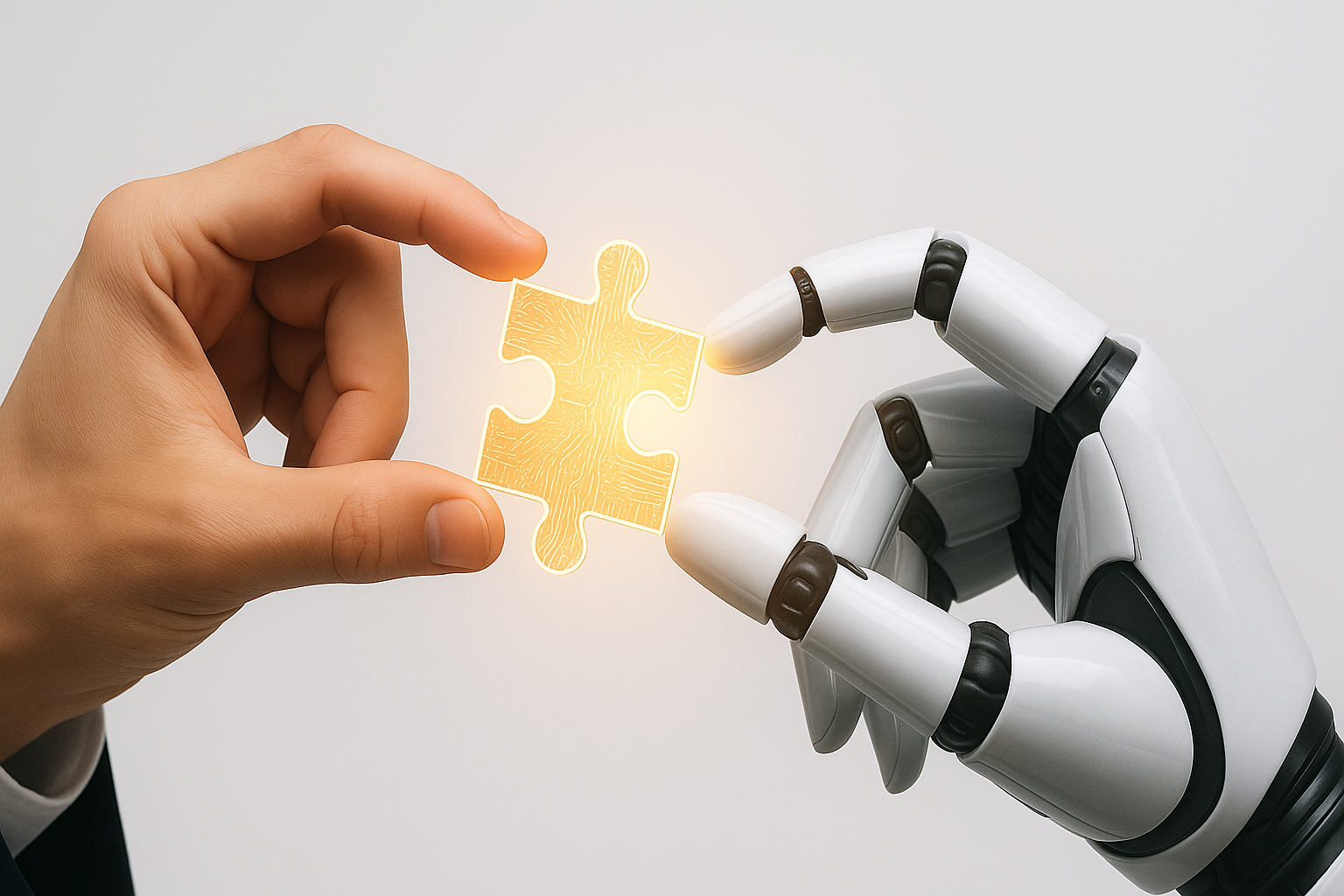
If you've seen headlines like the one from The Times about the “20 jobs most at risk from AI,” you might be feeling a mix of curiosity and anxiety. Is a robot really coming for your job?
The answer is more nuanced than a simple yes or no. AI isn’t a job-stealing villain — it’s a powerful wave of automation and augmentation. Rather than wiping out the workforce, it’s reshaping it. The key lies in understanding which roles are most susceptible to change, and which have a built-in human advantage.
Let’s move beyond the headlines and look at the broader picture, drawing on studies by Goldman Sachs, McKinsey, the World Economic Forum, and the Pew Research Center.
The Most Exposed: Jobs with High “Automation Potential”
The jobs most at risk from AI, particularly generative AI (like the models behind ChatGPT), are those that involve predictable, repetitive cognitive tasks — often white-collar roles focused on information processing.
Common Traits of High-Risk Roles:
- Heavy reliance on data analysis, pattern recognition, and information synthesis
- Routine language-based tasks such as writing, summarizing, and transcribing
- Predictable customer interaction and support
Roles consistently flagged as highly exposed include:
- Data Entry Clerks — Data extraction and entry can be automated with high accuracy.
- Administrative Assistants & Secretaries — Scheduling, email management, and document prep are easily augmented.
- Customer Service Representatives — AI chatbots and voice agents handle routine inquiries at scale.
- Accountants & Bookkeepers — Tasks like auditing, tax prep, and reconciliations are ripe for automation.
- Paralegals & Legal Assistants — Document review, contract analysis, and research are increasingly AI-driven.
- Transcriptionists & Translators — AI speech-to-text and translation tools are becoming highly proficient.
- Market Research Analysts — AI processes vast datasets faster than human analysts.
- Technical Writers — Standard documentation and manuals can now be auto-generated.
- Telemarketers — AI-driven outreach is already common.
- Loan Officers — Application evaluation based on set criteria is easily automatable.
High exposure doesn’t mean extinction. These jobs will evolve, with AI taking over routine work — freeing humans to focus on strategy, complexity, and empathy.
The Safest Havens: Where the Human Touch Matters Most
On the other hand, the jobs least vulnerable to AI automation depend on uniquely human skills — the kind that are difficult, if not impossible, to code.
Common Traits of Low-Risk Roles:
- Require complex physical dexterity and mobility in unstructured environments
- Demand high-stakes, real-world decision-making under uncertainty
- Center on human connection, empathy, mentorship, and creativity
- Involve leadership, people management, and cultural influence
Roles with a strong buffer against AI automation include:
- Healthcare Workers — Doctors, surgeons, nurses, and EMTs combine technical skill, intuition, and empathy.
- Skilled Trades — Electricians, plumbers, and HVAC technicians thrive in unpredictable real-world settings.
- Educators & Teachers — Inspiring students and managing classrooms remain deeply human tasks.
- Mental Health Professionals — Therapists and psychologists build trust and interpret subtle emotional cues.
- Creative Professionals — Artists, musicians, and conceptual writers bring originality and emotion AI can’t replicate.
- Senior Corporate Leaders — CEOs and executives make strategic decisions that blend logic with human nuance.
- Social Workers & Counselors — Navigating complex human systems requires empathy and adaptability.
- Trial Lawyers — Persuasion, cross-examination, and reading a jury rely on human performance.
- Chefs & Culinary Artists — Creating dishes and leading kitchens involves creativity and coordination.
- Maintenance & Repair Workers — Real-world adaptability makes these roles highly resilient.
The Bigger Picture: Augmentation, Not Just Automation
The real story isn’t just about job losses — it’s about transformation.
According to the World Economic Forum, while 85 million jobs may be displaced by AI and automation by 2025, 97 million new roles could emerge, adapted to a new division of labor between humans, machines, and algorithms.
The future of work is one of collaboration, not competition.
Think of an accountant using AI to handle calculations while focusing on strategic insights — or a doctor leveraging AI diagnostics to spend more time caring for patients.
How to Future-Proof Your Career
No matter your field, thriving in an AI-augmented world requires proactive adaptation.
Here’s how to stay ahead:
- Embrace Lifelong Learning — Continuously upskill. Learn to use AI tools in your industry.
- Double Down on Soft Skills — Critical thinking, creativity, communication, and empathy are your edge.
- Specialize Deeply — Expertise in niche areas is harder for AI to replace than general knowledge.
- Focus on Integration — Learn to manage and interpret AI systems; the most valuable workers will be AI collaborators.
Final Thoughts
The AI revolution isn’t about replacement — it’s about reinvention.
By understanding how the landscape is shifting, we can move from fear to preparedness, positioning ourselves not just to survive but to thrive.
What do you think? Is your role on either list? How are you preparing for the AI-driven future of work?















